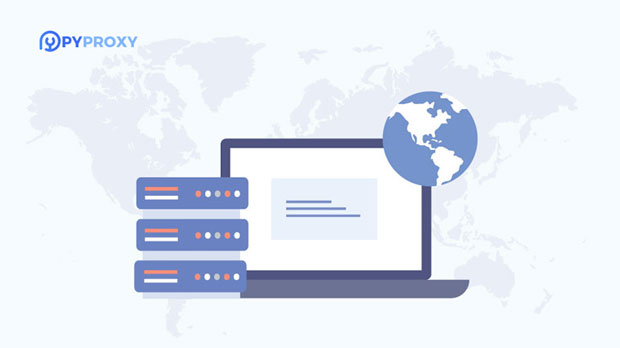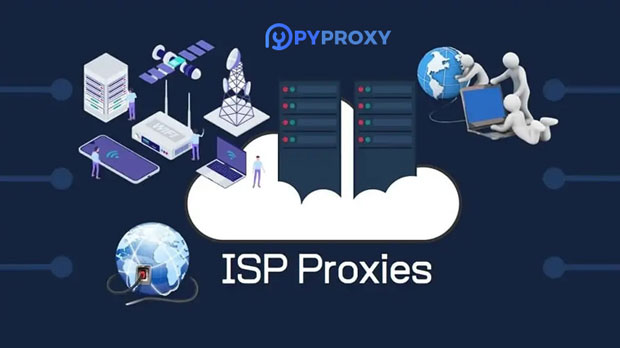When it comes to selecting the right proxy service for your business, the variety of proxy options available can be overwhelming. With the increasing need for data privacy, security, and reliability, choosing the most suitable proxy service becomes a crucial decision. In different business scenarios, the proxy requirements vary based on factors such as speed, anonymity, location, and scalability. Whether you are involved in e-commerce, digital marketing, or data scraping, understanding the core functionalities and benefits of different types of proxies will ensure you make the best decision for your specific business needs. This article will break down the key aspects to consider when selecting a proxy service, addressing various use cases and offering valuable insights to help you navigate the decision-making process. Understanding Proxy Services and Their ImportanceA proxy service acts as an intermediary between a client (such as a user or a system) and a destination server (usually a website or an online service). Proxies enable clients to mask their IP addresses, allowing for improved privacy, security, and sometimes performance. The use of proxy services has become increasingly vital across various industries for multiple reasons. For instance, businesses that engage in digital marketing, social media management, web scraping, or data aggregation rely heavily on proxies to mask their identities, ensure access to region-locked content, and enhance overall operational efficiency.Proxies come in various forms, including residential, data center, mobile, and rotating proxies, each with specific features and advantages suited for particular use cases. Understanding these differences will help businesses select the best proxy service for their needs.Key Factors to Consider When Choosing a Proxy ServiceBefore selecting a proxy service, there are several critical factors to assess:1. Speed and Latency The speed of a proxy service is crucial for tasks like web scraping, e-commerce, or content delivery. High latency can slow down processes and impact business operations. Choosing a proxy with low latency and fast response times will help businesses maintain optimal performance and avoid delays.2. Anonymity and Privacy Depending on the business use case, the level of anonymity required from a proxy service varies. For example, businesses involved in data scraping or competitive analysis often need high levels of anonymity to prevent being blocked or flagged by websites. On the other hand, businesses focusing on security and online privacy may prioritize proxies that provide robust encryption and IP masking features.3. Location and Geolocation Flexibility The location of proxy servers is important for businesses requiring access to region-specific content. Whether you need proxies to access localized services or bypass regional restrictions, selecting a proxy service with servers in various geographical regions ensures that your business can operate without restrictions.4. Scalability As your business grows, so do your needs. If your business anticipates rapid scaling, it is essential to choose a proxy service that can handle increasing demand without compromising performance. Look for a service that offers a wide range of proxy options and flexible plans that can accommodate growth.5. Reliability and Uptime The reliability of a proxy service is key to ensuring smooth business operations. Downtime can lead to disruptions in workflows and can impact your bottom line. Select a proxy provider with a proven track record of uptime and reliable customer support.Types of Proxies for Different Business Scenarios1. residential proxies Residential proxies use real residential IP addresses, which makes them ideal for tasks like web scraping, social media management, and data collection. These proxies are less likely to be flagged or blocked because they appear as legitimate users accessing the internet. They are a great choice for businesses involved in competitive analysis or e-commerce, where bypassing geographic restrictions and avoiding detection is essential.2. Data Center Proxies Data center proxies are faster and more cost-effective than residential proxies but come with a higher risk of detection. These proxies are ideal for businesses that require high-volume data extraction, such as price comparison websites or large-scale data aggregation. While data center proxies may be flagged more easily, they are generally sufficient for businesses that do not face significant risks from blocking.3. Mobile Proxies Mobile proxies route traffic through mobile devices, making them an excellent choice for businesses that need to simulate real mobile user activity. These proxies are commonly used in app testing, social media management, and mobile advertising. Businesses aiming to analyze mobile traffic or engage in location-based services often find mobile proxies to be a crucial tool.4. Rotating Proxies Rotating proxies are designed to change IP addresses at regular intervals, making them perfect for tasks that require high levels of anonymity. These proxies are ideal for businesses that engage in web scraping, data extraction, or SEO analysis, as they can avoid IP bans by continuously rotating IP addresses. Rotating proxies are a great choice for businesses that need to perform bulk scraping or access large amounts of data.Business Scenarios and Proxy Recommendations1. E-Commerce For e-commerce businesses, proxies are often used to track competitors’ pricing, monitor customer sentiment, and access region-specific content. Residential proxies are generally preferred in this case because they help simulate normal user behavior, preventing bans and reducing the chances of detection.2. Web Scraping and Data Collection For businesses that rely on web scraping to collect data for analytics, market research, or content aggregation, rotating proxies or residential proxies are recommended. These proxies allow for a high level of anonymity, which reduces the risk of being blocked by the websites being scraped.3. Digital Marketing In digital marketing, proxies are commonly used to manage multiple social media accounts, analyze competitor ads, and conduct market research. Residential proxies or mobile proxies are ideal, as they ensure that activities appear authentic and are not flagged by social media platforms or ad networks.4. SEO and Content Analysis For businesses focused on SEO and content analysis, rotating proxies can help with tasks such as keyword research, backlink analysis, and ranking monitoring. These proxies enable businesses to access a large number of websites without risking detection or getting banned by search engines.ConclusionSelecting the right proxy service is a crucial decision that depends on the specific needs of your business. Whether you are scraping data, managing social media accounts, or bypassing geographic restrictions, understanding the key factors such as speed, anonymity, scalability, and location flexibility will help you choose the best proxy service for your business. By selecting the appropriate proxy for your business scenario, you can enhance privacy, improve performance, and stay competitive in your industry.
Jul 10, 2025
![arrow]()



















































